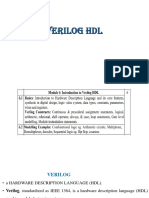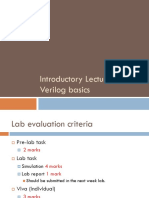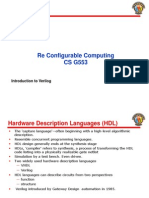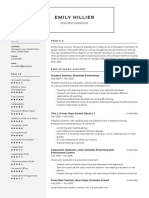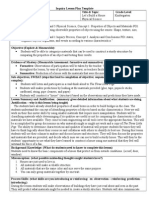0% found this document useful (0 votes)
27 views112 pagesVerilog Intro
This document provides an introduction to Verilog HDL, detailing its significance in simplifying the design of complex digital circuits through hardware description languages. It covers various levels of abstraction, design flow, and key features of Verilog, including modules, data types, and operators. The document also explains simulation processes and the development of test benches for verifying circuit functionality.
Uploaded by
alvi.ibn.amzadCopyright
© © All Rights Reserved
We take content rights seriously. If you suspect this is your content, claim it here.
Available Formats
Download as PDF, TXT or read online on Scribd
0% found this document useful (0 votes)
27 views112 pagesVerilog Intro
This document provides an introduction to Verilog HDL, detailing its significance in simplifying the design of complex digital circuits through hardware description languages. It covers various levels of abstraction, design flow, and key features of Verilog, including modules, data types, and operators. The document also explains simulation processes and the development of test benches for verifying circuit functionality.
Uploaded by
alvi.ibn.amzadCopyright
© © All Rights Reserved
We take content rights seriously. If you suspect this is your content, claim it here.
Available Formats
Download as PDF, TXT or read online on Scribd
/ 112






